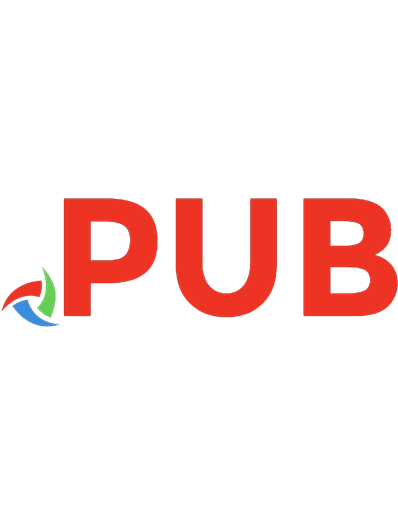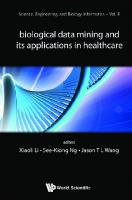Interactive Process Mining in Healthcare 303053992X, 9783030539924
This book provides a practically applicable guide to the methodologies and technologies for the application of interacti
457 35 8MB
English Pages 306 [310] Year 2020
Table of contents :
Foreword
Preface
Acknowledgements
Contents
1 Interactive Process Mining in Healthcare: An Introduction
1.1 A New Age in Health Care
1.2 The Look for the Best Medical Evidence: Data Driven vs Knowledge Driven
1.3 To an Interactive Approach
1.4 Why Process Mining?
1.5 Interactive Process Mining
References
Part I Basics
2 Value-Driven Digital Transformation in Health and Medical Care
2.1 Evolution of Patient-Centric Medical Care
2.1.1 Holistic Approaches to Healthcare Improvement in a Patient-Centric Framework
2.1.2 VALUE Based HC Concept
2.1.3 The Triple Aim of Healthcare with Attention for Health Care Professionals: The Quadruple AIM
2.2 Data-Driven Sustainable Healthcare Framework
2.2.1 International Consortium for Health Outcome Measures
2.2.2 Digital Health Transformation
2.2.3 IT Infrastructure as Enabling Agent of Digital Transformation
2.2.4 Artificial Intelligence Widely Available for Contributing to the Transformation
2.3 Challenges and Adoption Barriers to Digital Healthcare Transformation
2.3.1 Data Management Clash
2.3.2 Organizational Self-awareness for Digital Adoption Readiness
2.3.3 Inherent Risks of AI
2.3.4 Actions to Reduce Challenges, Hurdles and Barriers
2.4 Summary
References
3 Towards a Knowledge and Data-Driven Perspective in Medical Processes
3.1 Introduction
3.2 Process-Related Perspectives in Healthcare
3.3 Technologies for Clinical Decision-Making
3.3.1 Computer-Interpretable Guidelines
3.3.2 Development and Maintenance Issues with Computer-Interpretable Guidelines
3.4 Technologies for Clinical Process Management
3.4.1 Process Discovery and Continuous Improvement
3.4.2 Workflow Inference Models
3.5 Challenges of Clinical Decision-Making and Process Management Technologies
References
4 Process Mining in Healthcare
4.1 Process Mining
4.2 Process Mining in Healthcare
4.2.1 Variability in the Medical Processes
4.2.2 Infrequent Behaviour Could be the Interesting One
4.2.3 Medical Processes Should be Personalized
4.2.4 Medical Processes Are Not Deterministic
4.2.5 Medical Decisions Are Not Only Based on Medical Evidence, But Also on Medical Expertise
4.2.6 Understandability Is Key
4.2.7 Must Involve Real World Data
4.2.8 Solving the Real Problem
4.2.9 Different Solutions for Different Medical Disciplines
4.2.10 Medical Processes Evolve in Time
4.3 Conclusion
References
5 Data Quality in Process Mining
5.1 Introduction
5.2 Data Quality Taxonomies
5.2.1 General Data Quality Taxonomies
5.2.2 Data Quality Taxonomies in Process Mining
5.2.2.1 Process Mining Manifesto
5.2.2.2 Taxonomy by 5:bosewanna2013
5.2.2.3 Taxonomy by 5:verhulst2016evaluating
5.2.2.4 Event Log Imperfection Patterns by 5:suriadi2017event
5.2.2.5 Taxonomy by 5:vanbrabant2019quality
5.3 Data Quality Assessment
5.3.1 Data Quality Issues in Real-Life Healthcare Logs
5.3.2 Data Quality Assessment Frameworks
5.3.2.1 Framework by 5:fox2018data
5.3.2.2 Framework by 5:andrews2019leveraging
5.3.2.3 Framework by 5:martin2019interactive
5.3.3 Tools for Data Quality Assessment
5.4 Data Cleaning
5.4.1 Data Cleaning Heuristics
5.4.1.1 Incorrect Timestamps
5.4.1.2 Missing Case Identifiers
5.4.1.3 Missing Events
5.4.1.4 Incorrect/Missing Attribute Values
5.4.2 A Reflection on Data Cleaning Heuristics
5.5 Conclusion
References
6 Towards Open Process Models in Healthcare: Open Standards and Legal Considerations
6.1 Introduction
6.1.1 Pathways, Guidelines and Computerized Clinical Decision Support
6.2 The Need of Semantics for Clinical Processes
6.3 Data and Contextual Semantics with openEHR
6.3.1 Governance of Clinical Models
6.3.2 The Connection of Process Mining with OpenEHR
6.4 Workflow Semantics with openEHR
6.5 Privacy and Legal Framework
References
Part II Interactive Process Mining in Health
7 Applying Interactive Process Mining Paradigm in Healthcare Domain
7.1 Dealing with Digital Transformation Paradigm in Healthcare
7.2 Data Science for Medicine: Filling the Gap Between Data and Decision
7.2.1 Will the Doctors Be Replaced by Computers?
7.2.2 Towards an Interactive Pattern Recognition Approach
7.2.3 Through Explainable Models
7.3 Interactive Process Mining
7.4 Discussion and Conclusions
References
8 Bringing Interactive Process Mining to Health Professionals: Interactive Data Rodeos
8.1 Introduction
8.2 Interactive Process Mining Data Rodeos
8.2.1 Data Rodeo Sessions
8.2.2 Data Rodeos in an Interactive Process Methodology
8.3 Interactive Data Tools for Data Rodeos
8.3.1 Process Mining Ingestion
8.3.2 Log Filtering and Processing
8.3.3 Process Mining Discovery
8.3.4 Model Processing
8.3.5 Model Enhancement
8.4 Conclusions
References
9 Interactive Process Mining in Practice: Interactive Process Indicators
9.1 Approaching the Process Assessment to Health Professionals
9.2 Interactive Process Indicators (IPIs)
9.3 Measuring the Value Chain
9.4 Interactive Process Indicators by Example
9.4.1 Analyzing the Hospital Process
9.4.2 Base Process
9.4.3 Adding a Special Unit
9.4.4 Creating an Information Campaign
9.5 Conclusions
References
Part III Interactive Process Mining in Action
10 Interactive Process Mining in Emergencies
10.1 The Emergency Process
10.2 An Interactive Process Indicator for Emergency Departments
10.2.1 Seasons
10.2.2 Working Days and Weekends
10.2.3 Age
10.2.4 Hyperfrequenters
10.2.5 Returns and Readmissions
10.2.6 Length of Stay
10.2.7 Exitus
10.3 Discussion and Conclusion
References
11 Interactive Process Mining in Surgery with Real Time Location Systems: Interactive Trace Correction
11.1 Introduction
11.2 Background
11.3 Trace Correction
11.4 Experiments
11.4.1 Interactive Pattern Recognition for Improving the Application of Error-Correcting Techniques to RTLS
11.4.2 Physical Model as Graph Model
11.4.3 Interactive Error Model
11.4.4 Results of the Algorithm Using the Physical Model
11.4.5 Interactive Process Correction: Process Graph Model
11.5 Discussion and Conclusions
References
12 Interactive Process Mining in Type 2 Diabetes Mellitus
12.1 Introduction
12.2 Type 2 Diabetes as a Process
12.3 Process Mining Approach to Type 2 Diabetes
12.4 Type 2 Diabetes Management Processes
12.4.1 Analysis of HbA1C
12.5 Conclusion
References
13 Interactive Process Mining in IoT and Human BehaviourModelling
13.1 Introduction
13.2 Study Data and Procedure
13.2.1 Clustering Behaviour Models
13.3 Results
13.3.1 Group 0
13.3.2 Group 1
13.3.3 Group 2
13.3.4 Group 3
13.4 Interpreting Group IPIs
13.5 Conclusion
References
14 Interactive Process Mining for Medical Training
14.1 Process Mining in Medical Training
14.2 POME Methodology
14.3 Model Stage
14.3.1 Process Modeling
14.3.2 Delphi Panel
14.4 Data Stage
14.4.1 Execution and Recording
14.4.2 Video Tagging
14.5 Analysis Stage
14.6 Conclusion
References
15 Interactive Process Mining for Discovering Dynamic Risk Models in Chronic Diseases
15.1 Introduction
15.2 Chronic Conditions
15.3 Assessing Chronic Conditions with Risk Models
15.4 Interactive Data Rodeo for Creating Dynamic Risk Models
15.4.1 Interactive Process Indicators for BMI and BP
15.5 Discussion and Conclusions
References
16 Interactive Process Mining-Induced Change Management Methodology for Healthcare
16.1 Towards an Interactive Change Management Model in Value-Based Healthcare
16.2 Interactive Process Mining-Informed Change Management Methodology for Healthcare
16.3 The Team
16.4 Assessment Phase
16.4.1 Readiness Assessment
16.4.2 Stakeholders' Map
16.5 Arrangement Phase
16.5.1 Stage 1: Team Setup
16.5.2 Stage 2: Orientation and Creativity
16.5.3 Stage 3: Optimization
16.5.4 Stage 4: Mise en place
16.5.5 Stage 5: First Contact
16.6 Adaptation and Adoption Phase
16.7 Application Phase
16.7.1 Analysing Change
16.7.2 Norming Change
16.7.3 Performing Change
16.7.4 Monitoring Change
16.7.5 Fixing Change
16.8 Conclusion
References
17 Interactive Process Mining Challenges
17.1 Introduction
17.2 Engage Health Professionals
17.3 Look for the Best Representation Languages
17.4 Interactive Data Quality Assessment
17.5 Data Protection Laws Barriers
17.6 Dealing with Medical Data
17.7 Validation and Adaption of Best Practices and Clinical Guidelines
17.8 Conclusions
References
Index

![Interactive Process Mining in Healthcare [1st ed.]
9783030539924, 9783030539931](https://dokumen.pub/img/200x200/interactive-process-mining-in-healthcare-1st-ed-9783030539924-9783030539931.jpg)
![Process Mining Techniques for Managing and Improving Healthcare Systems [1 ed.]
1032431091, 9781032431093](https://dokumen.pub/img/200x200/process-mining-techniques-for-managing-and-improving-healthcare-systems-1nbsped-1032431091-9781032431093.jpg)







